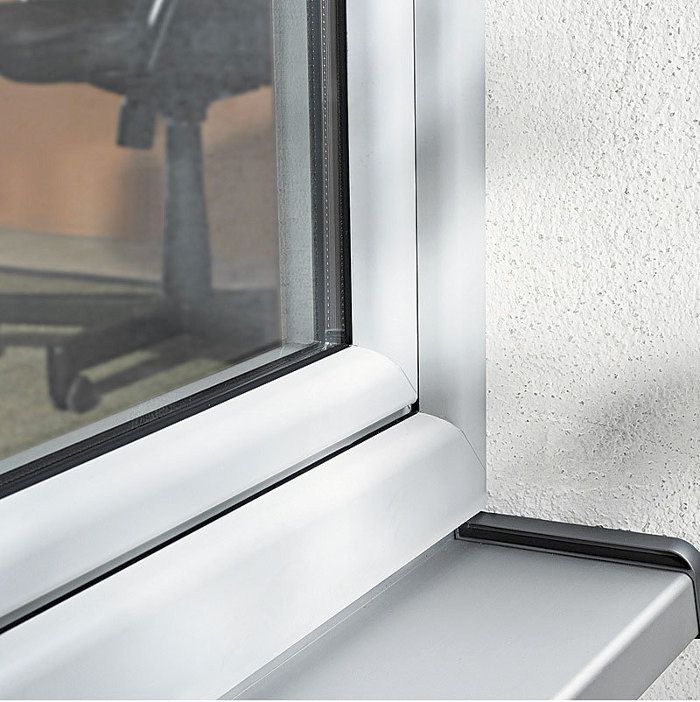
When a friend wanted an affordable 1500-sq.-ft. home, I convinced him to spend a little more of his budget on the shell so that the home would be comfortable and efficient. I calculated that with some minimal envelope improvements and with its good solar orientation, his new home easily could be made net zero with a reasonably sized photovoltaic system. A low-energy house needs high-performance windows, but most European windows are simply too expensive for a house with a modest budget. Enter Prossimo. Prossimo is a new company (prossimo.us) that’s importing windows to the United States from plants in Poland, Lithuania, and Estonia. I was Prossimo’s first customer, and three months after I placed the order, my friend’s windows were trucked to the job site on one tightly packed pallet.
Like most ultra-high-performance windows, Prossimo windows don’t have a nailing flange; instead, they’re installed in flashed openings with metal brackets that are screwed to the jack studs and header. The windows are fabricated from German-made, heavy-duty PVC extrusions and have triple-pane glass and beautiful stainless-steel hardware. Much heavier than regular windows, a single 48-in. by 48-in. window weighs 122 lb. The framers and I worked together to set them in place and attach their mounting brackets to the framing with screws. Later, we lapped flashing onto the window frames and integrated the house-wrap to create a continuous drainage plane.
These windows have a U-factor of 0.17, which reduces the home’s heating load by 15% compared to conventional builder-grade windows. This translates into $200 in annual energy savings. (Prossimo also offers windows with an even better U-factor of 0.13.) In addition to providing such high performance, the windows’ super-insulating glass helps make interior spaces quieter and more comfortable.
Like most other European windows, Prossimo windows have a tilt-turn operation, by which the sash can vent by tilting in the top or can swing like a door into the room. For this reason, it’s important to discuss with clients how the windows’ operation will affect furniture placement and window-covering options. It’s also important to check window and door sizes before ordering and to consider accessories such as screens and exterior locksets on patio doors. Getting screens or replacing an incorrectly sized window could involve a wait of two to three months as the parts are made and travel by ship across the Atlantic.
Even considering their robust construction and improved energy-effciency, perhaps the biggest plus with Prossimo windows is their price. In rough numbers, tilt-and-turn windows like the ones I installed cost $25 per sq. ft. Fixed units go for $17 per sq. ft. All the windows and doors for my friend’s house cost less than $7000—only about 15% to 20% more than a typical builder-grade window package.

























Comments are closed.